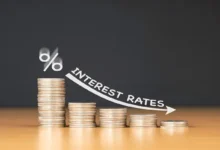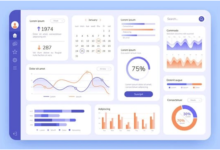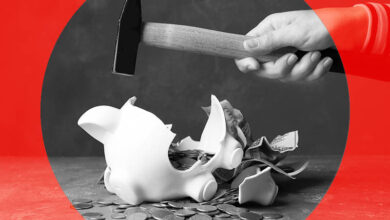
Creating A Debt Repayment Plan
Dealing with debt can feel like you’re carrying a heavy weight on your shoulders. Whether it’s credit card debt, student loans, medical bills, or personal loans, it’s easy to feel overwhelmed by the amount of money you owe. However, one thing to remember is that you’re not alone in this, and creating a solid debt repayment plan can help you save both time and money, ultimately leading you toward financial freedom.
A well-organized plan can help you tackle your debt efficiently, reduce stress, and even improve your credit score over time. The best part is that it’s all about setting the right priorities and taking things one step at a time. If you’re considering options like the best credit card consolidation loans to lower interest rates and simplify payments, that could be a great option to consider as part of your plan. Let’s walk through the five essential steps to create a debt repayment plan that works for you.
Table of Contents
Step 1: Take Stock of What You Owe
Before you can make progress, it’s important to understand exactly what you’re dealing with. Start by gathering all of your debts—whether they’re credit card balances, personal loans, medical bills, or anything else—and list them out. Make sure to include the following details for each debt:
- The total amount owed
- The interest rate
- The minimum payment required each month
This might feel a little overwhelming, but it’s important to face the situation head-on. This list will give you a clear picture of your financial situation and help you prioritize which debts to tackle first.
Step 2: Decide on a Debt Repayment Strategy
Once you’ve listed all your debts, it’s time to figure out how you’re going to approach paying them off. There are two main strategies that people often use to pay down debt: the debt snowball method and the debt avalanche method. Both strategies have their advantages, so let’s take a look at them:
- Debt Snowball Method: This strategy involves paying off your smallest debt first while making minimum payments on your larger debts. Once the smallest debt is paid off, you move to the next smallest, and so on. The idea is that you’ll get quick wins as you pay off smaller balances, which can boost your motivation.
- Debt Avalanche Method: With the debt avalanche method, you focus on paying off your debt with the highest interest rate first while making minimum payments on the others. Once the high-interest debt is paid off, you move to the next highest, and so on. This method saves you the most money on interest in the long run.
Both strategies work, but it’s important to choose the one that fits your personality and financial goals. If you’re motivated by small victories, the snowball method might work better for you. If you’re focused on saving money in the long term, the avalanche method might be your best bet.
Step 3: Explore Debt Consolidation Options
One way to simplify your debt repayment plan is by consolidating your debts. If you have multiple high-interest credit cards or loans, consolidating them into one loan with a lower interest rate can make your payments more manageable. Credit card consolidation loans are one of the most popular options, as they allow you to combine all your credit card debt into one payment, typically with a lower interest rate. This can help you save money over time and streamline the entire process.
Before deciding on consolidation, make sure to research the best credit card consolidation loans available to ensure you’re getting a competitive rate. Keep in mind that consolidating doesn’t eliminate your debt; it just makes the repayment process easier. You’ll still need to stick to your payment plan and avoid accumulating more debt on your credit cards.
Step 4: Set a Realistic Budget
A solid budget is crucial to staying on track with your debt repayment plan. To create a budget that works for your goals, start by identifying your monthly income and expenses. Look at all the essential expenses, such as rent, utilities, groceries, and transportation, and see how much you have left after these costs.
Now, prioritize your debt repayments. Set aside as much as possible for your debt while still making sure you can cover your essential living expenses. The more you can allocate toward paying down your debt, the faster you’ll be able to pay it off. If you’re having trouble finding extra funds, consider cutting back on non-essential expenses, like dining out or subscription services.
It’s important to be realistic about how much you can afford to pay toward debt each month. If you’re only making the minimum payments, your debt will take longer to pay off, but if you can increase your payments, you’ll get out of debt faster.
Step 5: Track Your Progress and Stay Motivated
Creating a debt repayment plan is only the first step; staying motivated is just as important. Tracking your progress will help you stay on course and give you a sense of accomplishment as you make headway toward becoming debt-free.
You can track your progress in a few different ways:
- Create a visual chart: Some people find it helpful to create a chart or graph that shows how much debt they’ve paid off over time. This visual representation of your progress can motivate you to keep going.
- Celebrate milestones: When you pay off a debt or reach a goal (such as reducing your debt by a certain percentage), take a moment to celebrate your accomplishment. This doesn’t mean splurging on unnecessary purchases, but treating yourself in small ways can keep you motivated.
- Set new goals: Once you pay off one debt, set new goals for the next one. As you work through your debts, focus on the ultimate goal: becoming debt-free. The more goals you hit, the more momentum you’ll build.
Final Thoughts: Be Patient and Persistent
Getting out of debt takes time, and it’s important to be patient with yourself. By following these five steps—reviewing your debts, choosing the right repayment strategy, exploring debt consolidation, setting a realistic budget, and tracking your progress—you’ll be well on your way to financial freedom. It may feel tough at times, but remember that persistence pays off. Stick to your plan, stay committed, and celebrate the small victories along the way. With determination and the right plan, you can create a debt-free future.








